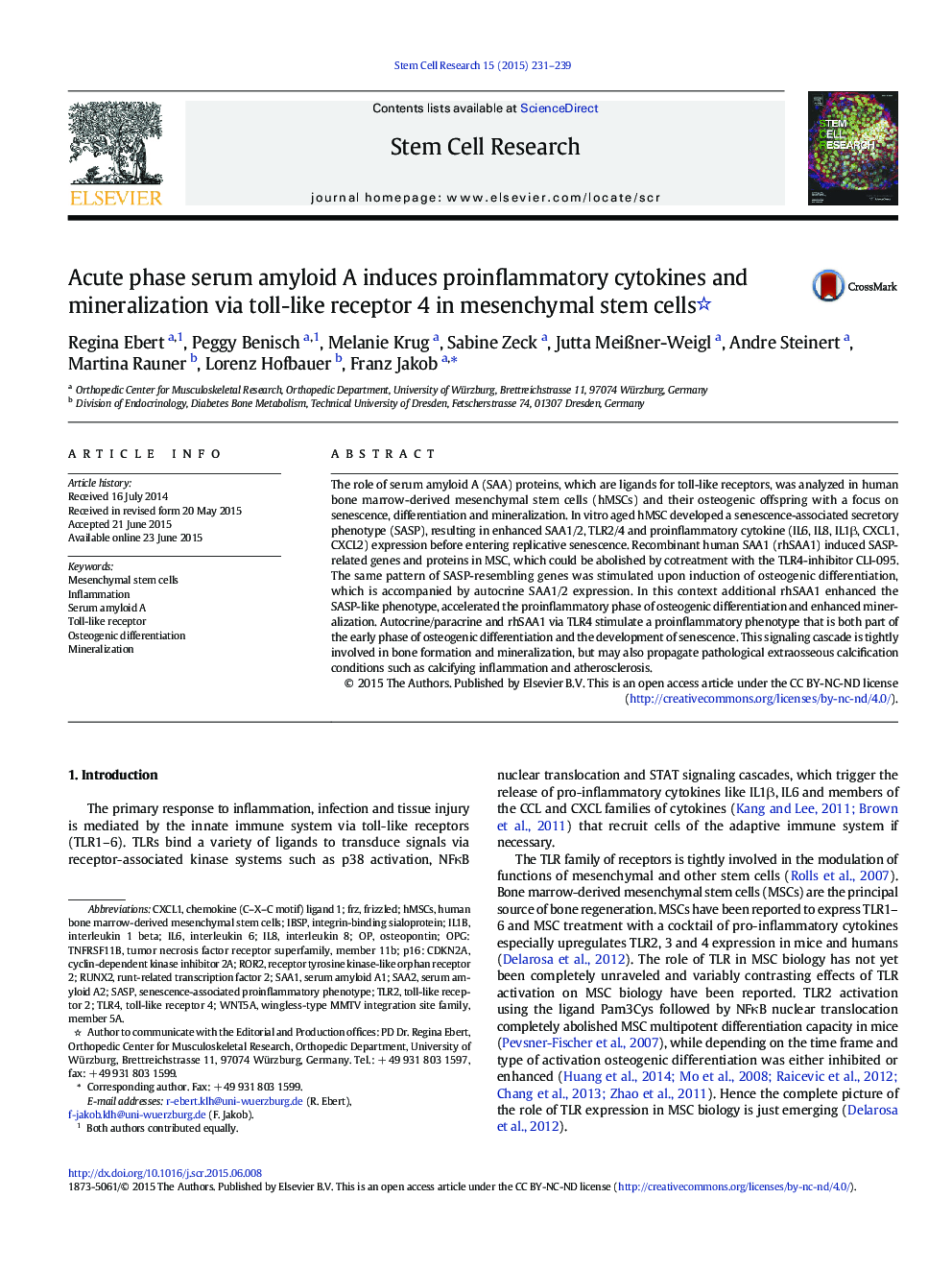| Article ID | Journal | Published Year | Pages | File Type |
|---|---|---|---|---|
| 2094078 | Stem Cell Research | 2015 | 9 Pages |
•MSCs develop a senescence-associated secretory phenotype with high SAA expression in vitro.•Recombinant SAA induces SASP-related genes in MSC via TLR4.•Osteogenic differentiation of MSC stimulates the same genes including SAA.•SAA accelerates proinflammatory phase of early osteogenic differentiation and enhances mineralization.
The role of serum amyloid A (SAA) proteins, which are ligands for toll-like receptors, was analyzed in human bone marrow-derived mesenchymal stem cells (hMSCs) and their osteogenic offspring with a focus on senescence, differentiation and mineralization. In vitro aged hMSC developed a senescence-associated secretory phenotype (SASP), resulting in enhanced SAA1/2, TLR2/4 and proinflammatory cytokine (IL6, IL8, IL1β, CXCL1, CXCL2) expression before entering replicative senescence. Recombinant human SAA1 (rhSAA1) induced SASP-related genes and proteins in MSC, which could be abolished by cotreatment with the TLR4-inhibitor CLI-095. The same pattern of SASP-resembling genes was stimulated upon induction of osteogenic differentiation, which is accompanied by autocrine SAA1/2 expression. In this context additional rhSAA1 enhanced the SASP-like phenotype, accelerated the proinflammatory phase of osteogenic differentiation and enhanced mineralization. Autocrine/paracrine and rhSAA1 via TLR4 stimulate a proinflammatory phenotype that is both part of the early phase of osteogenic differentiation and the development of senescence. This signaling cascade is tightly involved in bone formation and mineralization, but may also propagate pathological extraosseous calcification conditions such as calcifying inflammation and atherosclerosis.
